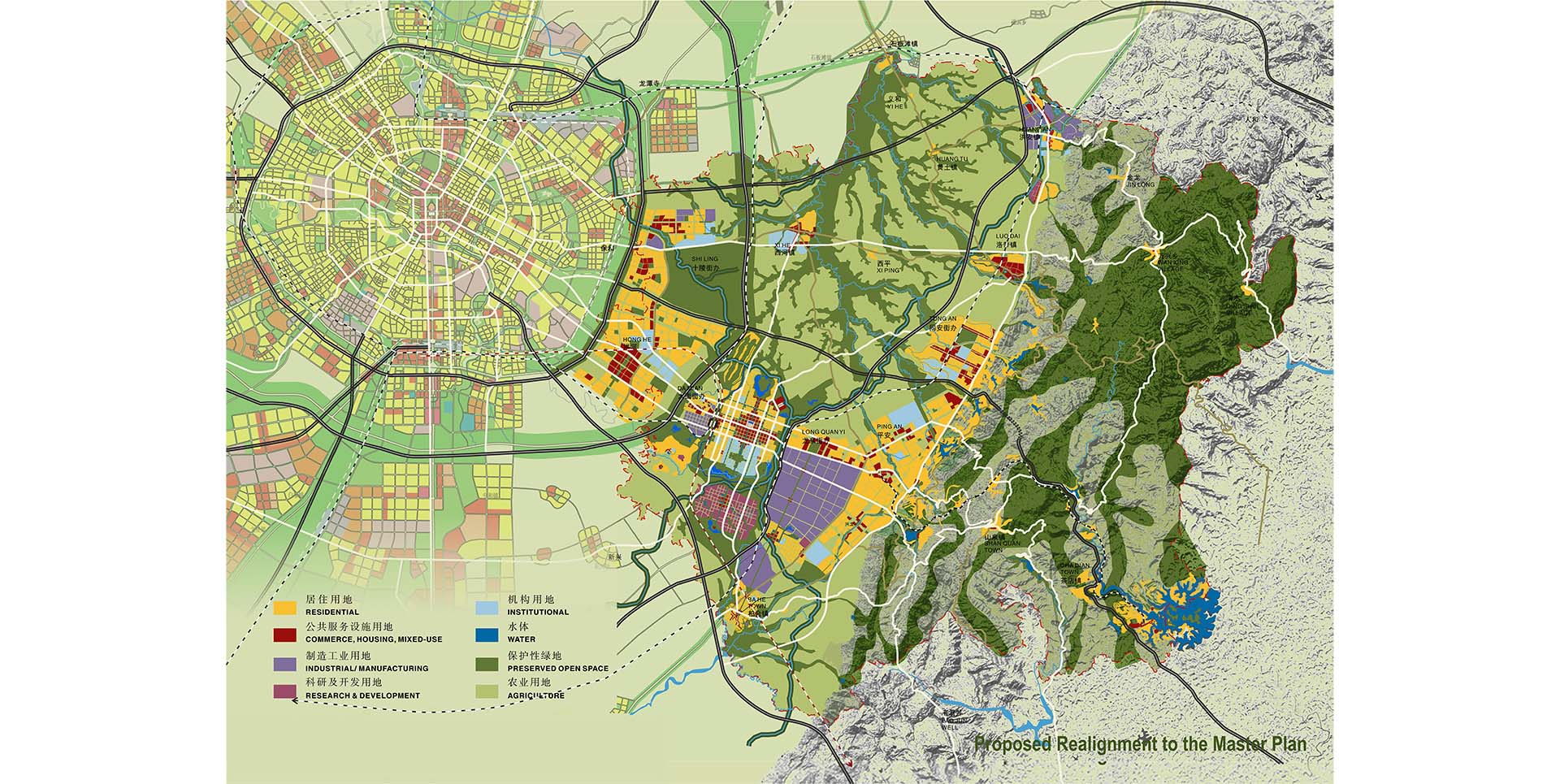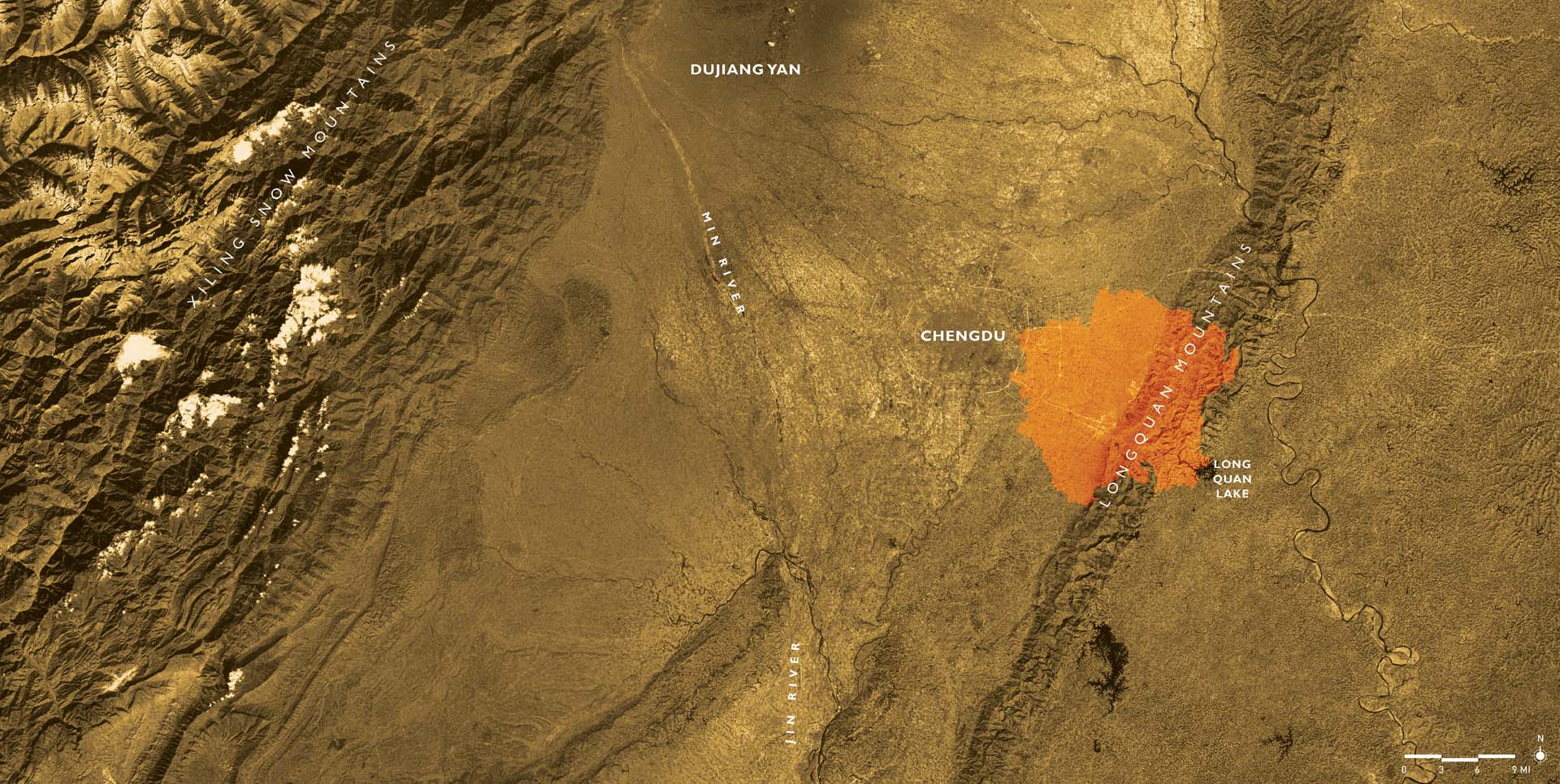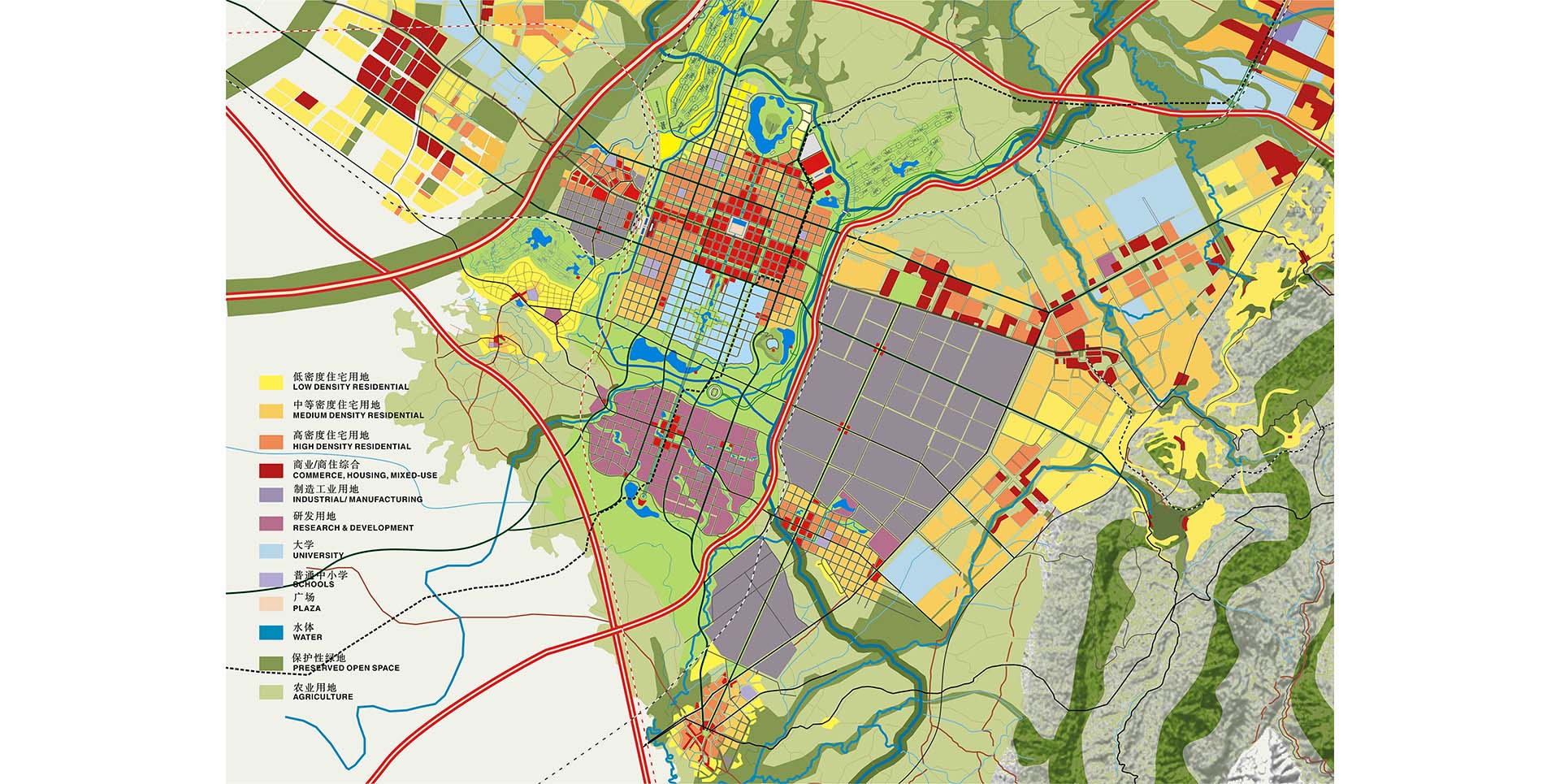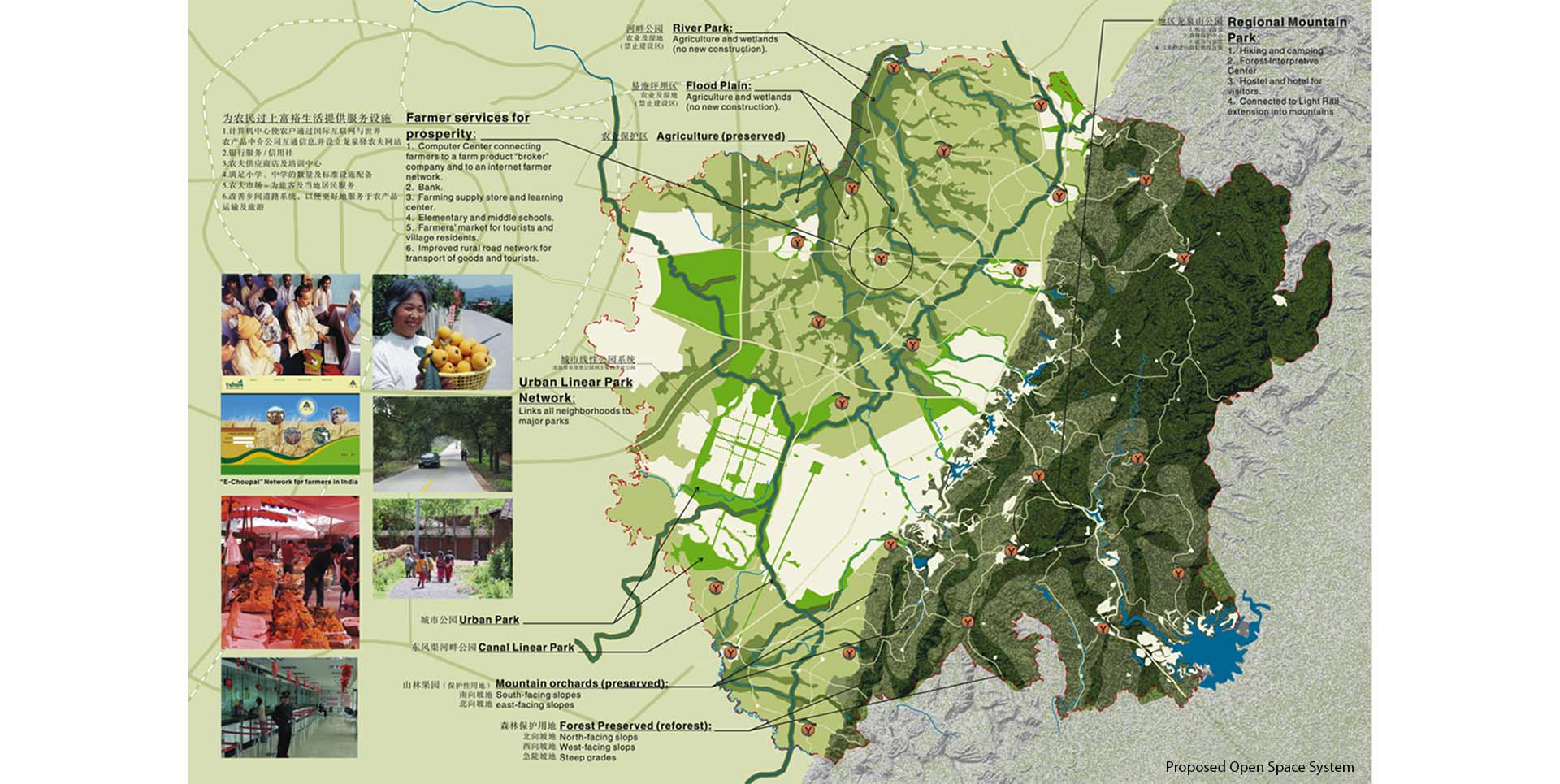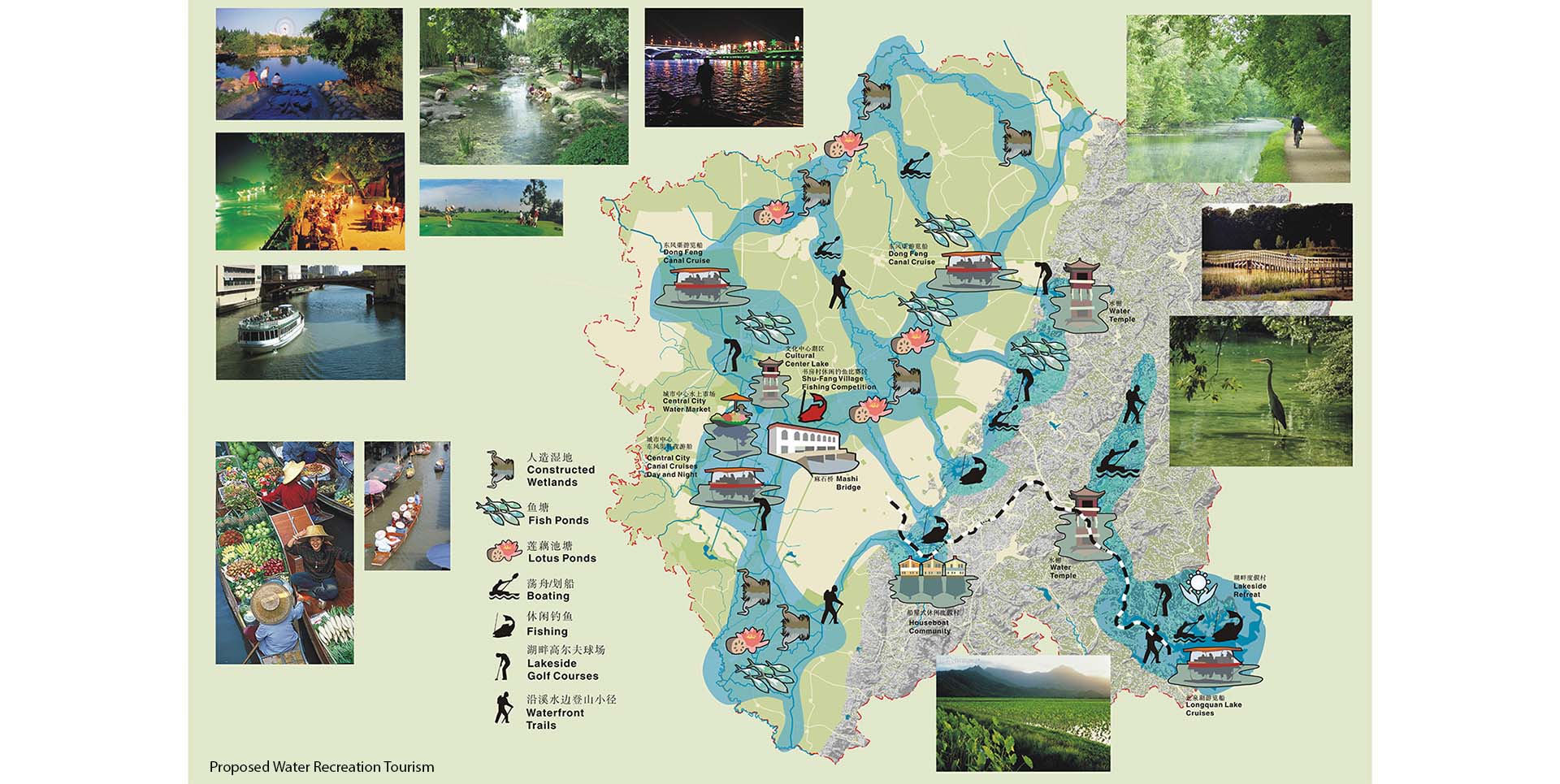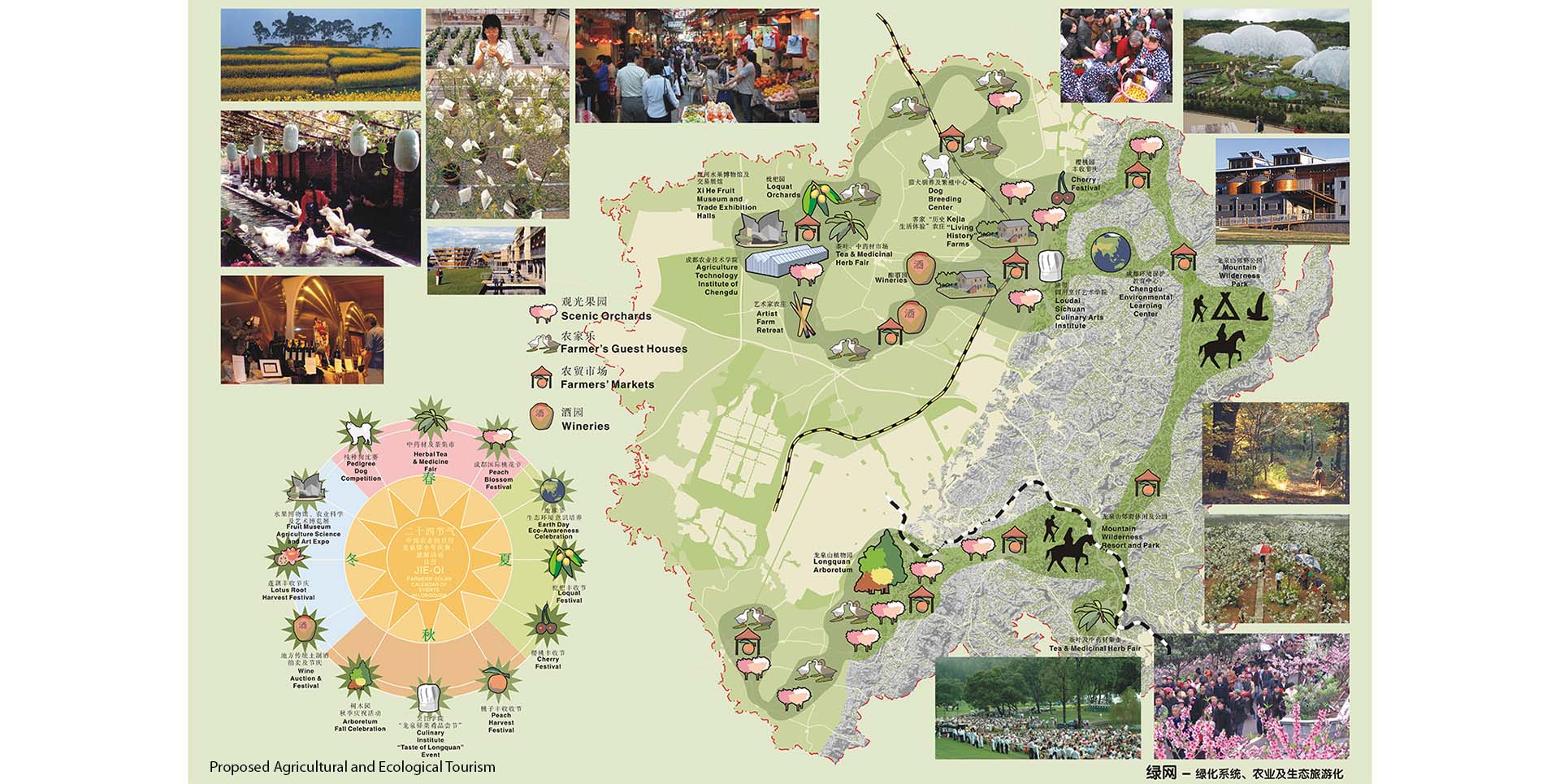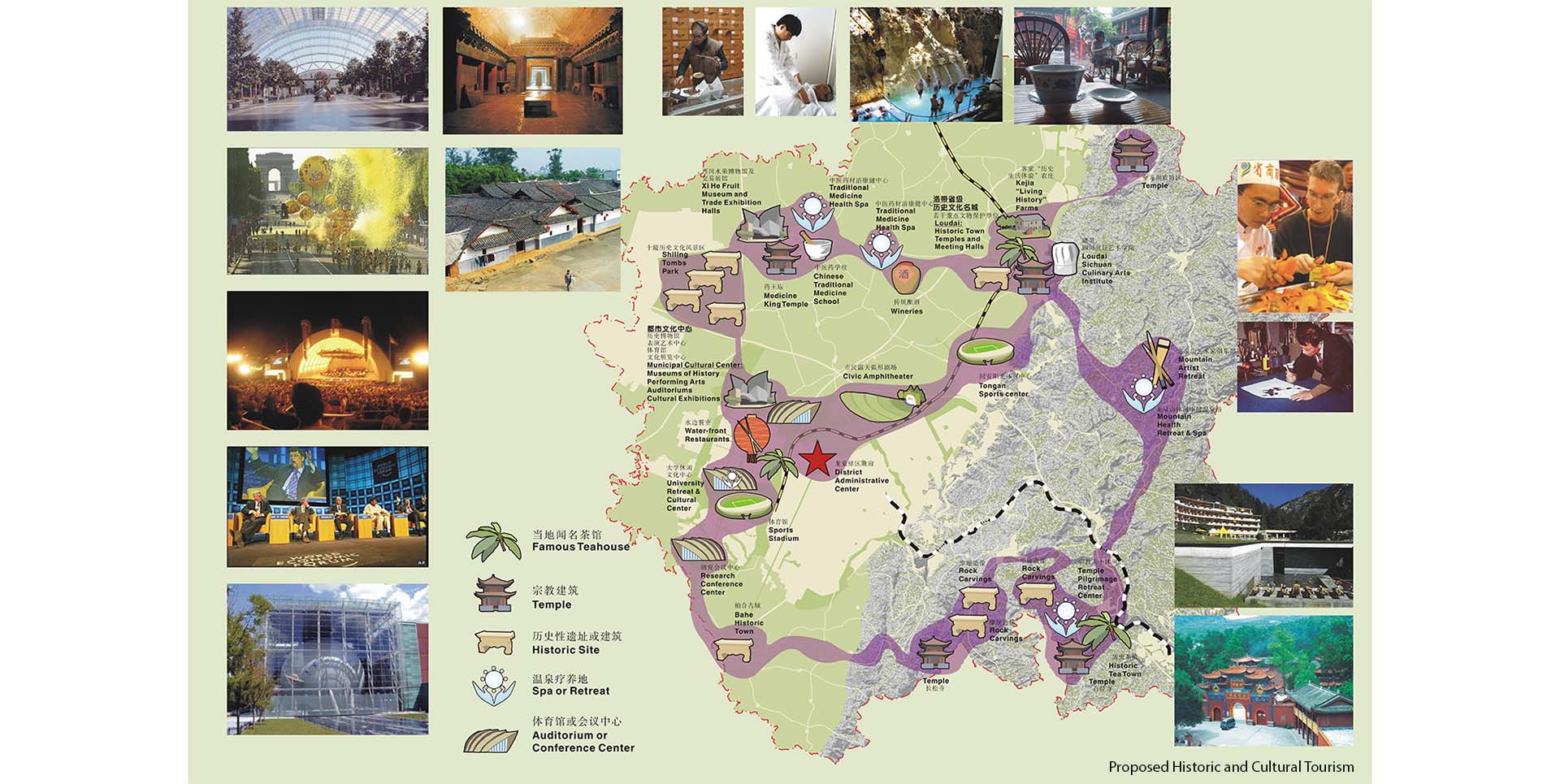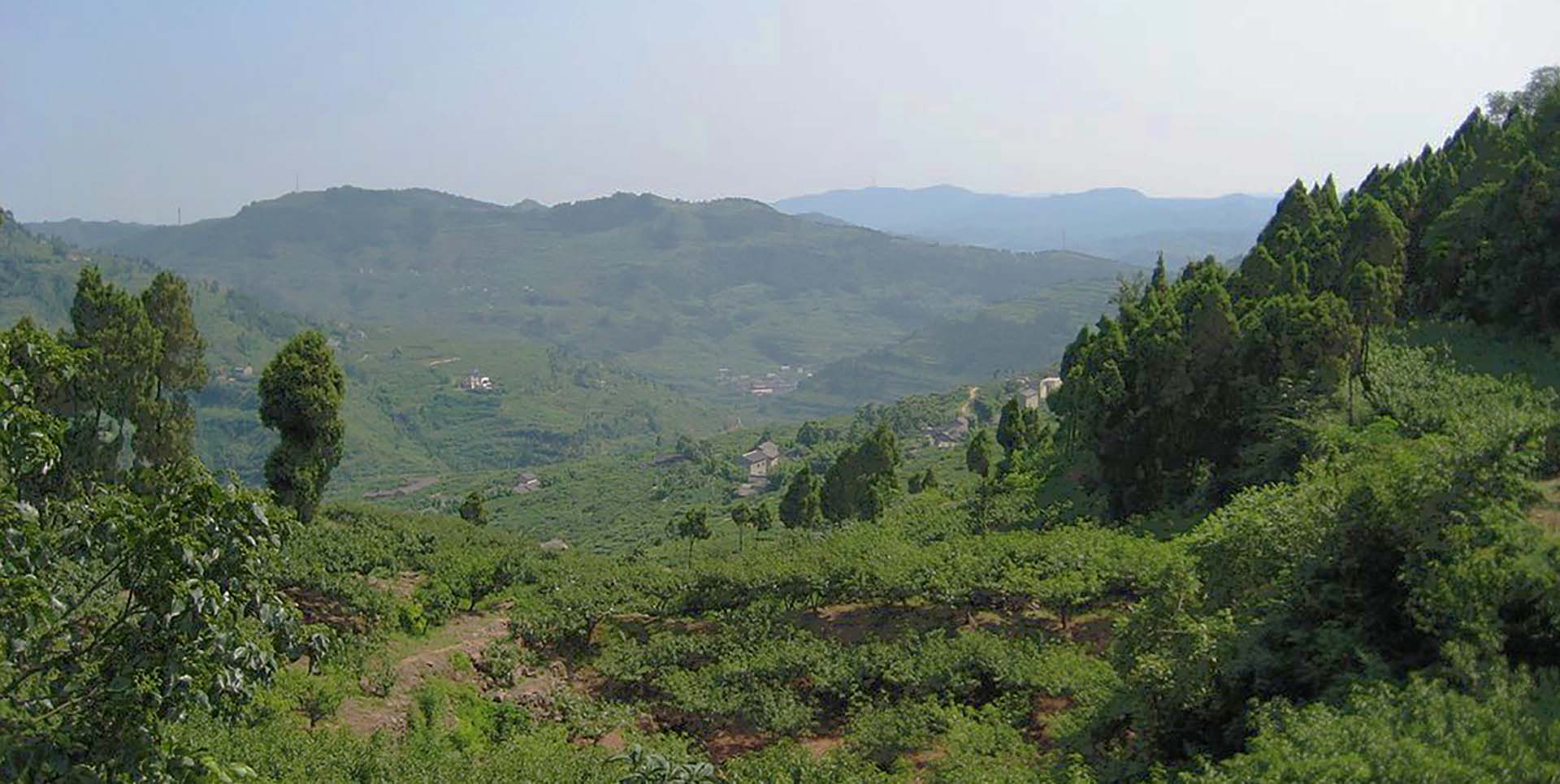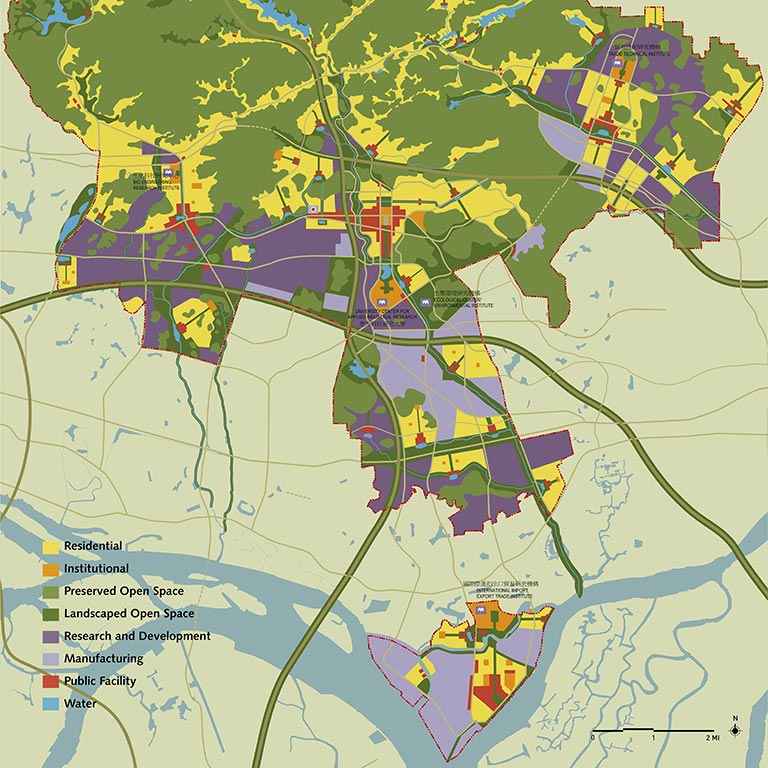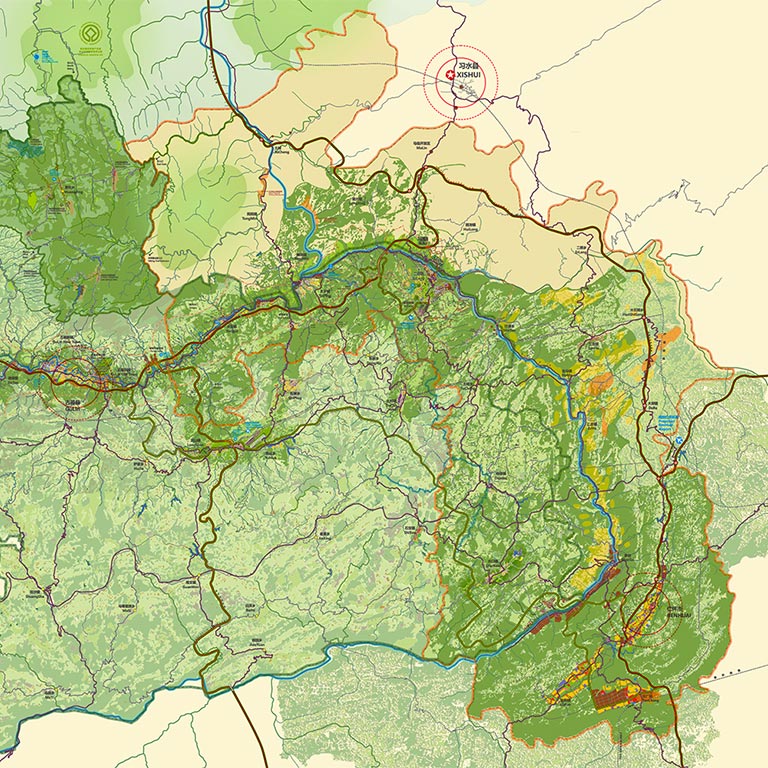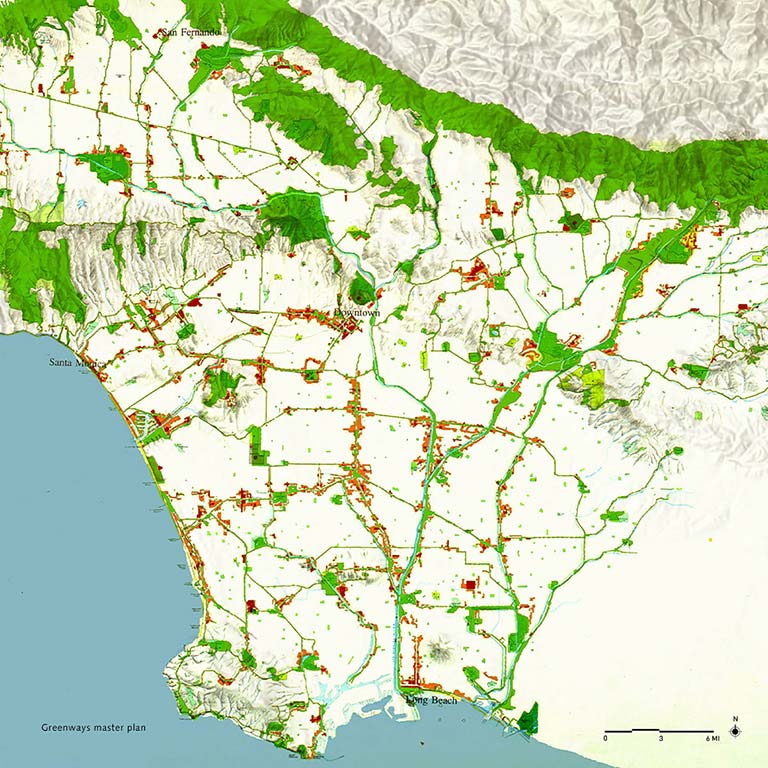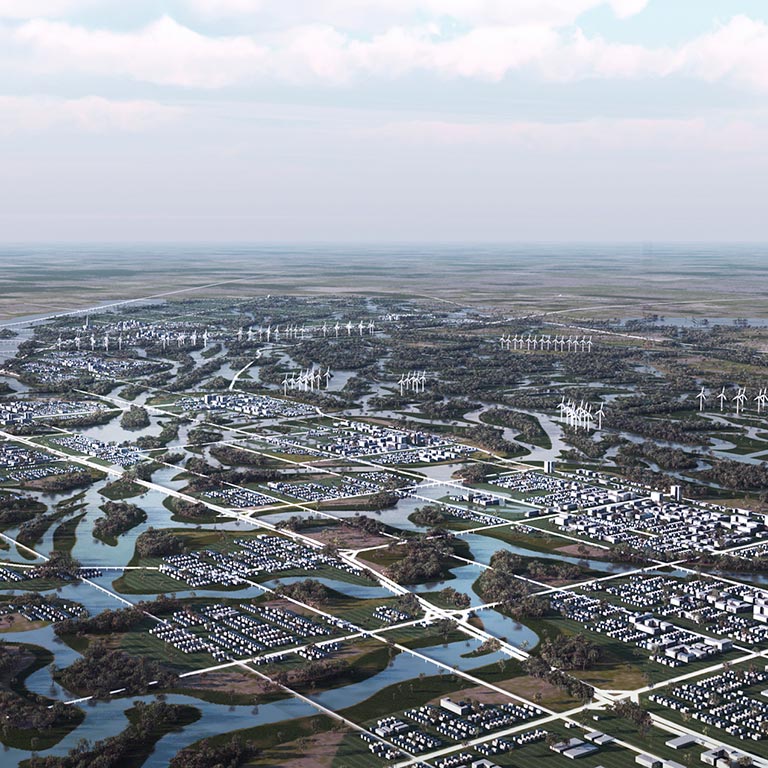Long Quan Yi District
Location: Chengdu, Sichuan, China
Client: Long Quan Yi Municipal Government
When China broadened the focus of its international trade and development policy to emphasize development of its western region, the historic city of Chengdu, already the capital of Sichuan Province, was identified as its cultural, administrative, and economic capital. With this new prominence, Chengdu’s urban growth became a national priority, particularly regarding the growth corridors radiating from the city center, often in conflict with existing agricultural and environmental resources. Located on the eastern edge of Chengdu’s urban core and along the critical growth corridor between Chengdu and Chongqing, Long Quan Yi is an industrial area in need of revitalization with extensive agricultural land and scenic mountains. The primary hurdle for Chengdu’s successful eastward expansion is this district, which is seen as a barrier economically linking Chengdu and Chongqing.
The plan transforms Long Quan Yi from an industrial area into a prominent international trade center, elevating the position of Chengdu in world affairs by promoting and facilitating domestic and international business. The proposed center features a compact urban business district; a university; a research park, and an industrial base, located near each other and connected by transportation and communication links. At the same time, the plan preserves agriculture and natural areas to create prosperous farming communities, high-quality tourism, and recreational destinations. The plan calls for strategic reforestation in the Long Quan mountains and establishes a comprehensive strategy to take advantage of adjacent Chengdu urban markets that would increase business opportunities for local farmers and preserve Chinese agricultural traditions and scenic beauty.
Services
Regional Urban and Rural Planning
Program
New urban business district, automobile manufacturing expansion, research and development, university, commercial office, retail, cultural and civic, financial, residential, agricultural, tourism, and nature preservation
Site Area
138,000 acres
Completion Date
2005
Awards
- First Place, International Design Competition
Unlock your Vision
Creative endeavors begin with great friendships. Discover how Johnson Fain can work with your group to translate an idea into an award-winning, community engaging environment.
